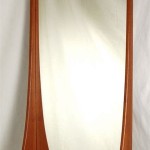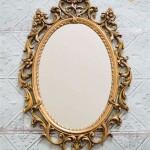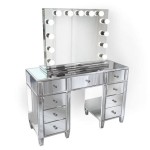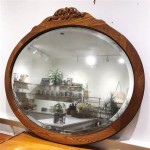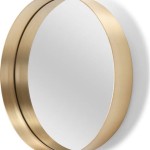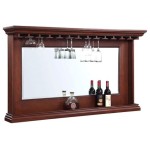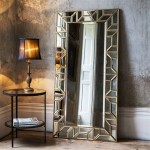Framing a Bathroom Mirror with Crown Molding
Adding crown molding to a bathroom mirror elevates the space, creating a polished and sophisticated look. This seemingly minor upgrade can significantly impact the overall aesthetic, transforming a standard mirror into a custom, elegant feature. This article details how to frame a bathroom mirror with crown molding, providing homeowners with the necessary guidance to complete this rewarding DIY project.
Planning and Preparation
Before beginning the project, careful planning and accurate measurements are crucial for a successful outcome. Begin by measuring the perimeter of the mirror. This will determine the total length of crown molding required. When purchasing the molding, add a few extra inches to account for potential cuts and adjustments. Choosing the right molding profile is also important. Consider the bathroom’s existing décor and choose a profile that complements the style, whether it’s traditional, modern, or somewhere in between. Consider the size of the mirror and the room; larger, more ornate moldings suit larger spaces, while simpler profiles are better suited for smaller bathrooms.
Next, gather the necessary tools and materials. These include a miter saw for accurate angle cuts, a measuring tape, a pencil, construction adhesive, finishing nails, wood filler, sandpaper, and paint or stain. Safety glasses and a dust mask are also essential for protecting against airborne particles and debris. A coping saw may be helpful for intricate joints, especially if the walls are not perfectly square.
Cutting and Assembling the Molding
Cutting crown molding accurately is essential for a seamless, professional finish. Crown molding is typically installed at a 45-degree angle, creating a mitered joint at the corners. For outside corners, the molding is cut such that the bottom edge is longer than the top edge. For inside corners, the top edge is longer. Using a miter saw ensures clean, precise cuts. It is advisable to practice cuts on scrap pieces of molding to ensure the angles are correct and the saw is set properly before cutting the purchased molding.
Once the molding pieces are cut, dry-fit them around the mirror to ensure a snug fit. This crucial step helps identify any discrepancies in measurements or cuts before applying adhesive. Slight adjustments can be made with sandpaper if necessary. If the corners do not fit seamlessly, using a coping saw to shape the profile of one piece to fit snugly against the other can create a tighter joint.
After confirming a proper fit, apply construction adhesive to the back of the molding. Carefully position the molding around the mirror, pressing firmly to ensure a strong bond. Use finishing nails to secure the molding further, spacing them appropriately for optimal hold without damaging the molding profile. Countersinking the nails and filling the holes with wood filler creates a smooth, seamless finish.
Finishing Touches
Once the adhesive is dry and the molding is secured, the final step involves finishing the molding to match the desired aesthetic. Sand any rough edges or excess wood filler to create a smooth, uniform surface. Caulk the seams where the molding meets the mirror and the wall to seal any gaps and enhance the finished appearance. The caulk also provides a flexible seal that accommodates slight movements due to temperature and humidity changes, preventing cracks and ensuring longevity.
The final step is painting or staining the molding. Choose a paint color that complements the bathroom décor, or stain the molding to bring out the natural wood grain. Apply multiple thin coats, allowing each coat to dry completely before applying the next. This provides a more durable and even finish. Once the final coat is dry, the newly framed mirror becomes a focal point, adding a touch of elegance and sophistication to the bathroom.
Troubleshooting Common Issues
While framing a bathroom mirror with crown molding is a relatively straightforward DIY project, a few common issues can arise. One frequent problem is gaps in the mitered corners. These gaps can often be filled using wood filler and carefully sanded to create a smooth, seamless transition. Another challenge can be securing the molding to the mirror, especially if the mirror’s surface is uneven. Using shims to create a level surface behind the molding can resolve this issue before securing it with adhesive and nails.
Dealing with uneven walls can also pose a challenge when cutting and fitting the molding. In such cases, using a coping saw to create a contoured profile on the intersecting molding piece can ensure a tight fit. The key is to take precise measurements, make careful cuts, and test the fit before applying adhesive. Patience and attention to detail will result in a professionally finished product that enhances the beauty and value of the bathroom.

Bathroom Mirror Framed With Crown Molding Large Mirrors Frame Makeover

Bathroom Mirror Framed With Crown Molding Frame Mirrors Diy Large
How To Upgrade Your Builder Grade Mirror Frame It

Simple Ways To Make A Framed Bathroom Mirror Hometalk

Crafty Again

Bathroom Mirror Framed With Crown Molding Mirrors Diy Frame

How To Frame A Bathroom Mirror Nest For Less

Crown Molding Shelves Ideas On Foter Home Decor Remodeling
Framing A Builder Grade Mirror That Is Not Between Two Walls

Diy Bathroom Mirror Frame With Molding The Happier Homemaker


